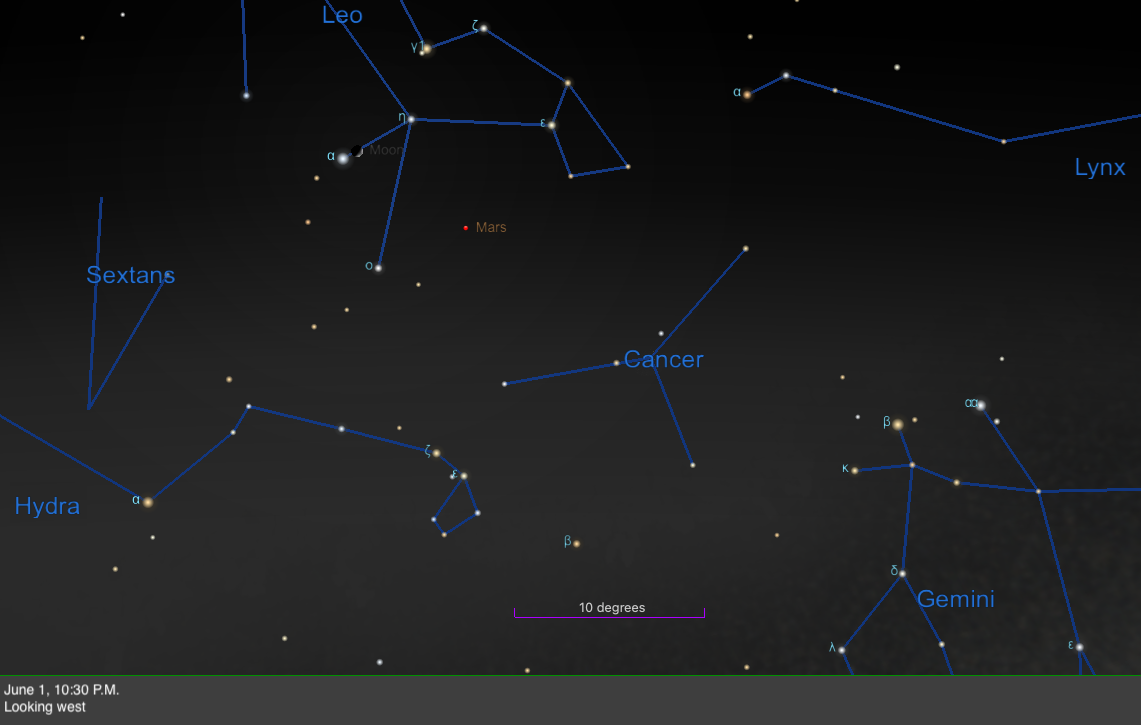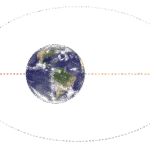Tonight, Sunday, June 1st, 2025, skywatchers are in for a treat! Our beautiful waxing Moon will share the western part of the constellation Leo with the fiery Red Planet, Mars.
This stunning celestial pairing will be visible for a few hours immediately after sunset in the western sky. It’s a perfect opportunity for anyone to step outside and appreciate the wonders of our solar system.
The Moon’s Close Approach to Mars
The Moon will make a close pass to Mars, creating a captivating scene for observers.
A Near Conjunction
Specifically, the Moon passes approximately 1.4 degrees north of Mars at 6 AM EDT. However, the best viewing time to see them together will be this evening, as they slowly descend in the western sky. They’ll remain visible for several hours after the sun dips below the horizon. Both celestial bodies are currently located within the constellation Leo.
The Moon will appear quite close to Leo’s brightest star, Regulus (Alpha Leonis), which is often referred to as the “heart of the Lion.”
About Regulus
Regulus, shining at a magnitude of 1.4, is an intriguing star system located about 79 light-years from Earth. It’s one of the relatively closer star systems to our Sun. Interestingly, Regulus is not a single star but a quadruple star system, meaning it consists of four stars. Even amateur telescopes can typically resolve at least three of these stars, with one companion positioned about 175 arcseconds away.
Mars: The Red Planet’s Appearance
Mars will be a noticeable point of light in the evening sky alongside the Moon.
Brightness and Visibility
The Red Planet is currently positioned about 8.5 degrees west of both the Moon and Regulus. It is situated closer to the border between Leo and Cancer. Mars now shines at a magnitude of 1.2, making it slightly brighter than Regulus. True to its name, it will display a distinct ruddy or reddish glow, making it easily identifiable.
Telescopic View
If you observe Mars through a telescope, it will appear quite small, spanning only about 5 arcseconds. This means that discerning any surface features will be challenging for some time. We will need to wait until late next year when Earth and Mars are closer in their orbits for more detailed telescopic views of its surface.
Key Astronomical Timings for June 1st
Here are some important timings to help you plan your stargazing for tonight:
- Sunrise: 5:33 A.M.
- Sunset: 8:23 P.M.
- Moonrise: 11:14 A.M.
- Moonset: 12:51 A.M. (June 2nd)
- Moon Phase: Waxing crescent (36% illumination)
Please note: Times for sunrise, sunset, moonrise, and moonset are provided in local time from 40° N 90° W. The Moon’s illumination percentage is given at 12 P.M. local time from the same location.
Don’t miss this opportunity to see the Moon and Mars together in the evening sky!








